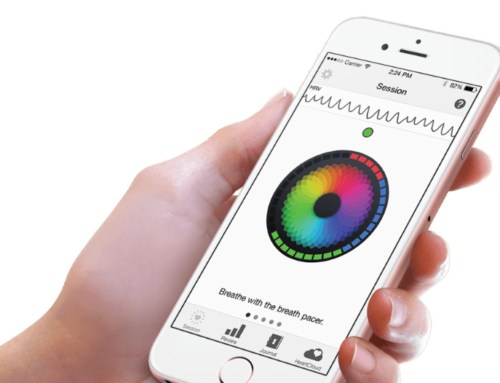Drunkorexia is an eating disorder characterized by limiting caloric intake to accommodate drinking alcohol. This may involve behaviors aligned with anorexia like restricting food, skipping meals, or excessive exercising before drinking, or may involve bulimic behaviors combined with alcohol such as drinking excessive alcohol in order to purge previously ingested food. Learn more about drunkorexia and how it can manifest below.
Drunkorexia in college students – a tale of two roommates
If you’re a college student, this may look familiar.
It has been over a month since you started back to school. You’re still settling in and trying to get into a routine. You’re excited to build some new friendships, so you’re going out and meeting people as often as you can. Luckily for you, your roommate feels the same way, and you spend quite a bit of time together.
Your roommate is someone with whom you feel you’ve really hit it off. They are fun and interesting. You have noticed that alcohol seems to be a prominent feature of their social life, and when they’re drinking, you find it hard to connect with them in any meaningful way. They drink fast and get drunk, and when they’re heavily intoxicated, they often talk about how much they hate their body to anyone who will listen. They say that they eat too much and are too fat.
Perplexed by this, you watch them closely one weekend. On Friday, you notice they skimp on breakfast, and then they skip lunch entirely. By the time your friend group left for Friday night’s outing, they were tipsy from the “pre-gaming” they insisted on and continued to drink throughout the night. Later, they gorged themselves on pizza and vomited on the way home.
Saturday morning, they are hungover and regretful. You half-expect them to skip the night’s plans to recuperate, but they do not. They take a dose of headache medication, what you think might be a few laxatives, and get on the scale they have tucked under their bed. They say, “You go on ahead to breakfast. I’m going to hit the gym. We’re still going out tonight, right?”
Food and Alcohol Disturbance – FAD is Not a Fad at All
If any of this concerns you, you have good instincts. You are witnessing signs of two of the biggest health concerns facing young adults: alcohol use disorders (AUD) and eating disorders. When combined, this condition is called Food and Alcohol Disturbance or FAD.
FAD is defined as “a set of behaviors that encompass the restriction of calories, over-exercise, and other compensatory behaviors before, during or after alcohol use to offset calorie intake or maximize intoxication” (Choquette et.al.,2018). FAD combines the most acute dangers of alcohol use disorder and some of the worst behaviors of an eating disorder in such a way that makes both conditions worse.
This is not a fad to try. And still unfortunately, 33 percent of college students report binge drinking in any given month (SAMSHA, 2019), and many are drinking with the intention to get drunk. Drinking despite negative consequences like getting sick, “blacking out,” or getting into fights can be indicators of Alcohol Use Disorder (AUD).
This kind of behavior with alcohol lays the foundation for a lifetime of problematic drinking and resulting negative consequences. Adding to this, drinking alcohol “on an empty stomach”, compounds the risks of acute drunkenness, accidents, acute alcohol poisoning, and other life altering situations.
Drunkorexia Symptoms – Be Aware of Harmful Habits
As with other eating disorders, hallmark symptoms of drunkorexia include skipping meals, binge eating, compulsive exercise, and body dissatisfaction, paired with excessive drinking. When erratic eating patterns become the norm, dehydration, malnutrition, and other physical issues, along with a host of mental and emotional symptoms, become a reality.
This is a lot to think about. Alcohol use disorders and eating disorders are serious and often co-occurring illnesses that are both progressive and can be fatal if not treated.
If someone you care about is struggling with food, alcohol, or both, consider talking with them about it. Hearing honest concerns from people they care about is vital to moving them toward healthier behavior and seeking help.
For more information about FAD, you can view the Compensatory Eating and Behaviors Related to Alcohol Consumption scale (CEBRACS).
And at Walden, we know finding care can be tough. That’s why we are here for you. If you are concerned that you, or a loved one, may have an eating disorder, please reach out by completing the form on this page or email us at intake_coordinators@waldenbehavioralcare.com.
—
 Stephanie Haines, M.Ed., CHES (she/her/hers) has been providing school communities with specialized addiction prevention education since 1999 and has taught students of all ages in most U.S. states and more than 25 countries across five continents. After completing her graduate work at Plymouth State University’s Eating Disorders Institute in 2013, Stephanie joined Walden Behavioral Care as their Prevention Education Specialist, creating an eating disorders prevention curriculum designed for use in school communities. Stephanie takes great joy in raising awareness about the prevention and treatment of eating disorders and substance use disorders as a private consultant, and helping families get the care and support they need and deserve as a member of the Walden team.
Stephanie Haines, M.Ed., CHES (she/her/hers) has been providing school communities with specialized addiction prevention education since 1999 and has taught students of all ages in most U.S. states and more than 25 countries across five continents. After completing her graduate work at Plymouth State University’s Eating Disorders Institute in 2013, Stephanie joined Walden Behavioral Care as their Prevention Education Specialist, creating an eating disorders prevention curriculum designed for use in school communities. Stephanie takes great joy in raising awareness about the prevention and treatment of eating disorders and substance use disorders as a private consultant, and helping families get the care and support they need and deserve as a member of the Walden team.
*This blog post does not necessarily represent the views of Walden Behavioral Care and its management. The Walden Blog is meant to represent a broad variety of opinions relating to eating disorders and their treatment.
—
References
Qi B, Humphrey A, Bulik CM, Baker JH, Munn-Chernoff MA. Food-restricted alcohol consumption: relation to psychopathology in college students. J Am Coll Health. 2021 Mar 24:1-10. doi: 10.1080/07448481.2021.1891915. Epub ahead of print. PMID: 33759730; PMCID: PMC8460711
Eisenberg MH, Fitz CC. “Drunkorexia”: exploring the who and why of a disturbing trend in college students’ eating and drinking behaviors. J Am Coll Health. 2014;62(8):570-7. doi: 10.1080/07448481.2014.947991. PMID: 25102366
Choquette EM, Ordaz DL, Melioli T, Delage B, Chabrol H, Rodgers R, Thompson JK. Food and Alcohol Disturbance (FAD) in the U.S. and France: Nationality and gender effects and relations to drive for thinness and alcohol use. Eat Behav. 2018 Dec;31:113-119. doi: 10.1016/j.eatbeh.2018.09.002. Epub 2018 Sep 13. PMID: 30245363.
1 SAMHSA, Center for Behavioral Statistics and Quality. 2019 National Survey on Drug Use and Health. Table 6.21B—Types of Illicit Drug, Tobacco Product, and Alcohol Use in Past Month among Persons Aged 18 to 22, by College Enrollment Status and Gender: Percentages, 2018 and 2019. https://www.samhsa.gov/data/sites/default/files/reports/rpt29394/NSDUHDetailedTabs2019/NSDUHDetTabsSect6pe2019.htm#tab6-21b. Accessed January 11, 2021







